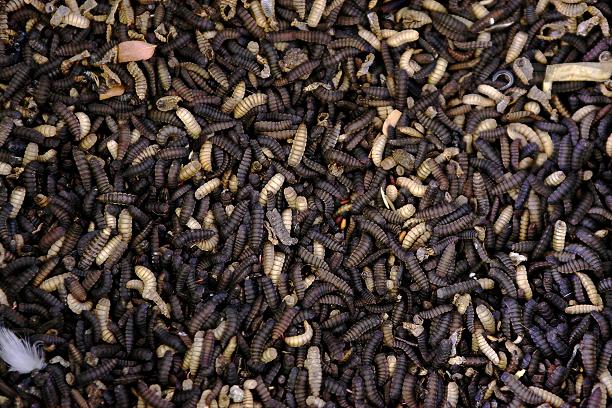Your next snack: a bug from the Swedish forest?

Spiders, insects and other creepy crawlies can make healthy, cheap and climate-friendly meals, at least according to international organizations like the United Nations.
What kind of bounty could Swedish forests be hiding?
Organizations like the UN have been pushing for more people to eat insects. And in May, the leading agricultural university dealing with this field – Wageningen, in the Netherlands – will host a big conference where researchers, politicians and representatives from the food industry will meet to discuss a future where insects provide nourishment.
According to the United Nations Food and Agriculture Organization, edible bugs are a good source of protein. They are also efficient. For example, crickets need six times less feed than cattle to produce the same amount of protein. Bugs also produce less greenhouse gases than livestock.
But in most countries in the EU, stores and restaurants are not allowed to sell insects as food. In Sweden, the Food and Drug Administration recommends that companies who want to start selling insects should wait until the decisions on so-called “novel foods” have been revised, possibly in the spring.
But if you are so eager to start eating bugs that you cannot wait until then, well, you are in luck. Because the Swedish forests, like others, are already naturally stocked.
Under the bark of stumps and fallen trees, you can find different kinds of edible beetle larva, like the Timberman, Ribbed Pine Borer, and Flat Bark Beetle.
Entymologist Åke Lindelöw, who works at the Swedish University of Agricultural Sciences in Uppsala, says they are fine as long as you cook them before eat them.
“It’s better to eat insects that have been heated – either fried or boiled or whatever, instead of eating them raw and ingesting microorganisms and other things that could disagree with you,” he says.
Not only that, but insects – just like poultry and beef – do not have a lot of flavor on their own, so much of their taste depends on preparation and spices, he says.
What’s in Sweden’s forests?
Reporter Fredrik Hielscher from the Swedish Radio Science department goes out with Lindelöw to the forest of Lunsen, outside of Uppsala, to collect a jar full of bugs to cook.
Under the bark of a pine tree stump, they find the larva of the Timberman beetle.
Lindelöw points out the butter yellow color of the larva and the fact that it has no legs. He also says that underground, where the roots of the stump are, there are many more edible bugs. He says some of them might have hard shells that you’d have to remove, much like you would the shell of a shrimp.
Lindelöw says most bugs in Sweden are edible, but that its best to avoid bugs that have “warning” colors – red and yellow and black, a signal to birds that they are poisonous and an indication that they are probably not so good for us humans either.
Lindelöw says that if eating bugs were to catch on, insects would probably need to be raised, but that this could probably be done with very simple fodder.
Back at the institution where Lindelöw works, he fries the bugs they’d collected in a little butter.
Sirirat Akkasoon, a janitor walks by. She’s originally from Thailand where insects are a common dish.
“We fry them in oil, and then we usually spray them with some soy sauce and add a little white pepper,” she says.
But Akkasoon says that some of her countrymen are concerned about eating bugs, because they worry about how they’ve been harvested and whether they’ve been sprayed with something harmful in the process.
The reporter tries one of the Timberman larva and says it is juicy, that it tastes salty like popcorn and also nutty. “Not bad at all,” he says.



